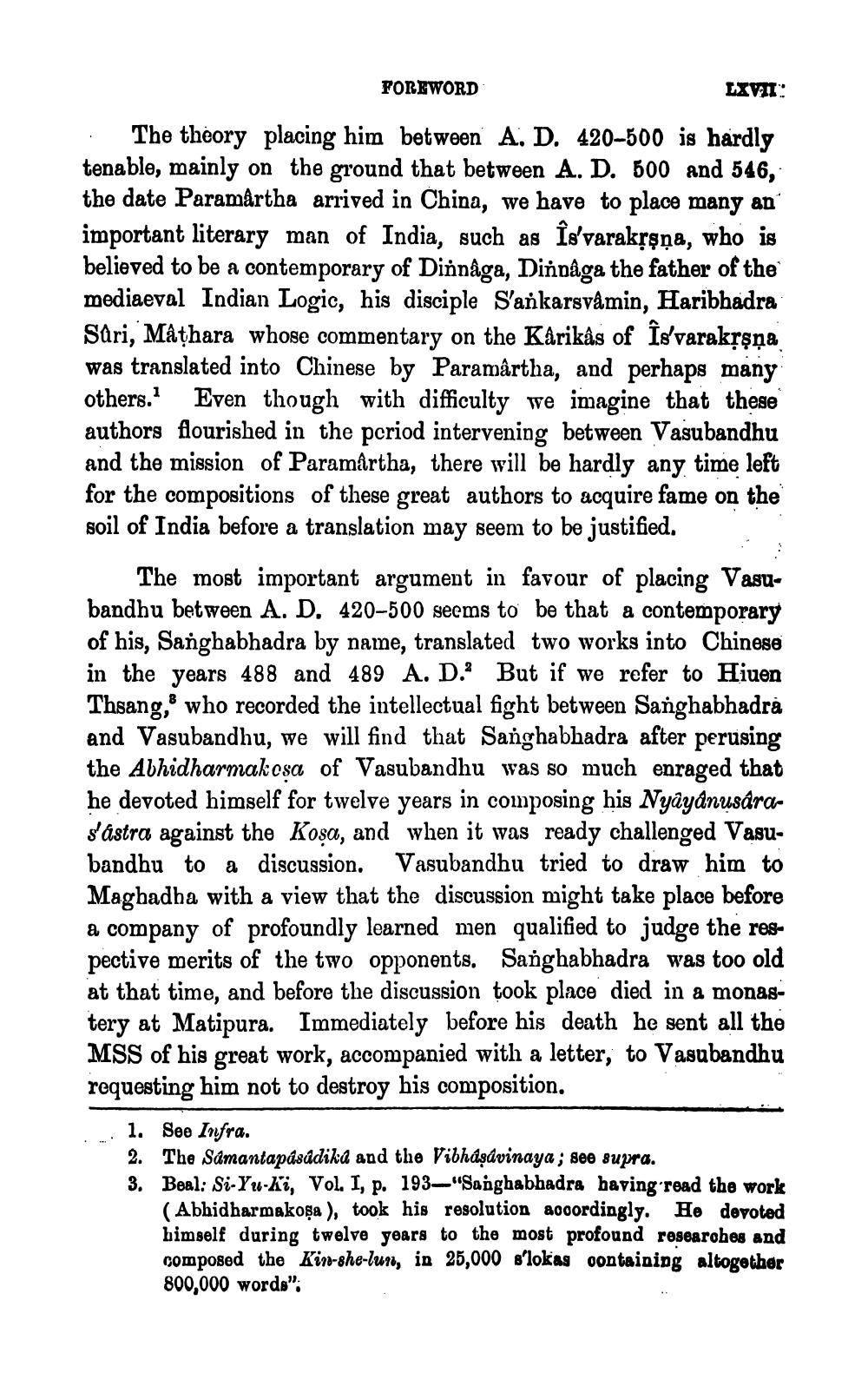________________
FOREWORD
LXVII:
• The theory placing him between A. D. 420-500 is hardly tenable, mainly on the ground that between A. D. 500 and 546, the date Paramartha arrived in China, we have to place many an important literary man of India, such as Îs'varakļşņa, who is believed to be a contemporary of Dinnaga, Dinnaga the father of the mediaeval Indian Logic, his disciple Sankarsvåmin, Haribhadra Sari, Mathara whose commentary on the Karikâs of İs'varakļşņa was translated into Chinese by Paramartha, and perhaps many others.? Even though with difficulty we imagine that these authors flourished in the period intervening between Vasubandhu and the mission of Paramartha, there will be hardly any time left for the compositions of these great authors to acquire fame on the soil of India before a translation may seem to be justified.
The most important argument in favour of placing Vasubandhu between A. D. 420-500 seems to be that a contemporary of his, Sanghabhadra by name, translated two works into Chinese in the years 488 and 489 A. D. But if we refer to Hiuen Thsang, who recorded the intellectual fight between Sanghabhadra and Vasubandhu, we will find that Sanghabhadra after perusing the Abhidharmakosa of Vasubandhu was so much enraged that he devoted himself for twelve years in composing his Nyaydnusaras'astra against the Kosa, and when it was ready challenged Vasubandhu to a discussion. Vasubandhu tried to draw him to Magbadba with a view that the discussion might take place before a company of profoundly learned men qualified to judge the respective merits of the two opponents. Sanghabhadra was too old at that time, and before the discussion took place died in a monastery at Matipura. Immediately before his death he sent all the MSS of his great work, accompanied with a letter, to Vasubandhu requesting him not to destroy his composition. .. 1. See Infra.
2. The Samantapásúdika and the Vibháşdvinaya; see supra. 3. Beal: Si-Yu-Kë, Vol. I, p. 193—"Sanghabhadra having read the work
(Abhidharmakoşa ), took his resolution accordingly. He devoted himself during twelve years to the most profound researches and composed the Kin-she-lun, in 25,000 s'lokas containing altogether 800,000 words":




